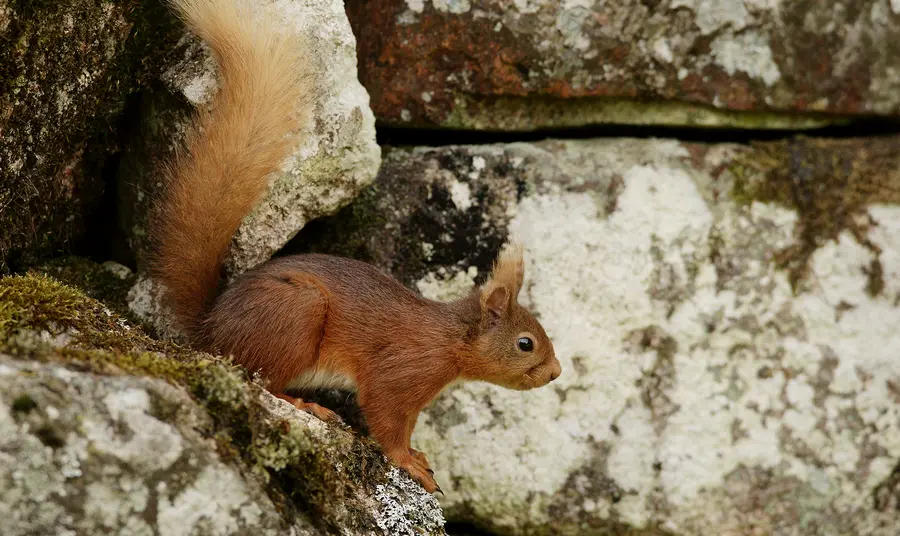
Heritage Grants
The red squirrel is one of the most endangered native mammals in the UK. It has declined dramatically over the past century as a result of loss of broadleaf habitat and the influence of grey squirrels, which carry a virus that is fatal to red squirrels.
Efforts to create a safe haven for red squirrels on Anglesey started in the late 1990s, when the population of red squirrels had declined to around 40 individuals in one woodland plantation. An Island Haven aimed to take the conservation work forward at a landscape scale. When the project began in 2011 there were fewer than 1,000 red squirrels in Wales, including around 300 on Anglesey.
Activities included managing grey populations on the island and creating a one-kilometre-deep ‘grey squirrel free zone’ on the adjacent mainland. Captive bred red squirrels were reintroduced in order to create an island-wide population. The squirrels were reinstated in habitats where it has historically been found, including public parks, wooded gardens and green spaces. New rope bridges encouraged red squirrel movement and land managers were given advice about squirrel monitoring and management. Widespread support of landowners was critical to the success of this project and the sensitive issue of grey squirrel culling also required careful handling.
Biological recording was crucial to the project with live trapping studies providing data to help understand the pattern of red squirrel dispersal following reduced competition from grey squirrels. Innovative sampling of hair samples from feeding stations were analysed for genetic information. Other surveillance work involved ink pad footprint monitoring and checking for squirrel movements between Anglesey and the mainland.
A group of volunteers helped with squirrel population management through checking traps and feeders, recording nest box sightings, maintaining the website, leading workshops and guided walks. Other activities were developed to help new audiences on Anglesey and the mainland learn about red squirrels and take part in conservation work. Some activities were delivered specifically with groups of young people at risk of being excluded from mainstream education.